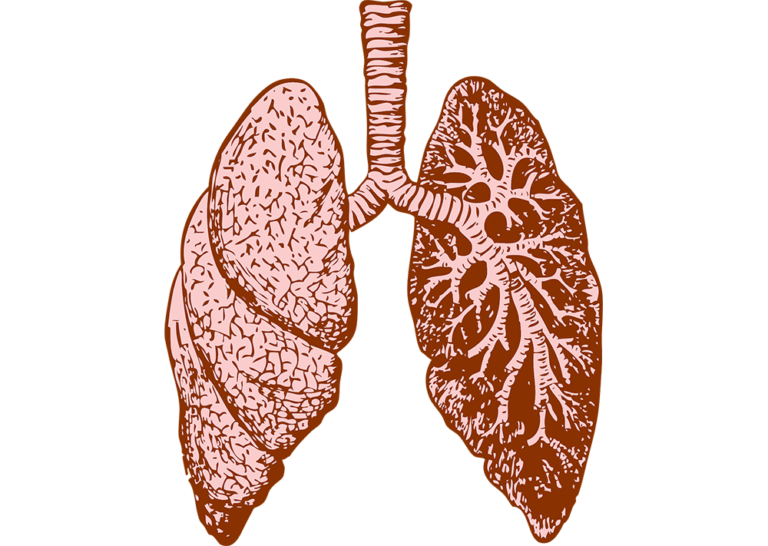
Pulmonary embolism is a blockage in one or more of the blood vessels that supply blood to the lungs. Most often these blockages, which are sometimes called “blood clots in the lungs,” are caused by blood clots that form elsewhere and then travel to the lungs. Most blood clots in the lungs actually form in the legs or pelvic area (where the legs connect to the body) and then move to the lungs. In rare cases, blockages can also be caused by air bubbles, tiny globs of fat, or pieces of tumor that travel to the lungs.
Let’s learn more about pulmonary embolism.
Is pulmonary embolism dangerous?
Blood clots in the lung can be as sudden and dangerous like a heart attack with similar mortality. One in 3 people with a PE can die suddenly. If a blood clot clogs a blood vessel, it can prevent blood from flowing to parts of the lung, reduce oxygenation of blood, put back pressure on the heart and in some instances it can even lead to death.
What are the symptoms of pulmonary embolism?
- Sudden shortness of breath,
- Sharp, knife-like chest pain especially with breathing
- Coughing up blood
- A rapid heartbeat
- Fainting or passing out
What causes “blood clots in the lungs”?
There are many predisposing causes of DVT and PE, but most importantly prolonged immobility such as after an injury or surgery; or long plane (‘coach class syndrome”) or car ride; certain medications such as birth control pills and hormones, and certain cancers or clotting disorders.
Blood clots in the lung can be as sudden and dangerous like a heart attack with similar mortality. One in 3 people with a PE can die suddenly. If you get any of these symptoms, especially if they happen over a short period of time (hours or days), seek medical advice urgently. At the hospital, doctors can run tests to find out if you do have a clot.
How is pulmonary embolism detected?
There are several tests doctors can use to find out if a person has a blood clot in a lung. The most common tests include:
- CT or CAT scan– A CT pulmonary angiogram is a special kind of X-ray and involves injecting a special dye in the veins to detect the size and location of the clot.
- A ventilation/perfusion lung scan (also called a V/Q scan) –
- D-dimer blood test –
- Pulmonary angiography – This is a specialized procedure requiring insertion of a tiny tube inside the heart or lung artery under X-ray and injecting dye to detect the location and size of the clot.
How is pulmonary embolism treated?
Pulmonary embolism should be taken seriously, diagnosed quickly and treated urgently. Pulmonary embolism is treated with blood thinner medicines that are commonly referred to anticoagulants or anti-clotting medicines. These medicines keep the clot from getting bigger and traveling to the lung. There are a few different anti-clotting medicines that come as injectable shots (i.e. lovenox) or pills including warfarin (brand name: Coumadin), rivaroxaban (brand name: Xarelto), apixaban (brand name: Eliquis), and edoxaban (brand name: Savaysa) and others.
People who have a clot are at risk of developing
another clot, especially in the first few months.
To prevent subsequent clots, these patients are usually put on medicines to prevent future blood clots for months to years depending on the cause and mechanism of the clot.
If you forget or miss a dose, call your doctor to find out what to do. When you start taking an anti-clotting medicine, you will need to have your blood tested. If your doctor puts you on an anti-clotting medicine, take it exactly as directed. At the wrong doses, the drug can either stop working or lead to serious bleeding. In fact, bleeding is a risk with all the anti-clotting medicines, so you and your doctor should also always watch out for signs of bleeding.
Special circumstances
Sometimes, with large clots to the lung or those that severely restrict blood flow to the leg, stronger medications called thrombolytics or ‘clot busting’ medication are used. In other cases, procedures to remove (“thrombectomy) and dissolve the clot are also needed.
People who cannot take medicines to treat clots, or who do not get enough benefit from the medicines, may need a different treatment, called an “inferior vena cava filter” (also called an IVC filter). The inferior vena cava is the large vein that carries blood from your legs and the lower half of your body back up to your heart. Inferior vena cava filters filter and trap any large clots that form below the location of the filter, preventing them from reaching the lung.
Can I do anything on my own to prevent blood clots?
You can take steps —literally and figuratively — to prevent pulmonary embolism. One of the primary causes of blood clots is long-term inactivity. Clots may form if a person sits still for too long, and so people who travel on long airplane flights, for example, are at increased risk of blood clots. Here are some things you can do to help prevent a clot during a long flight or other long periods of sitting:
- Stand up and walk around every 1 to 2 hours
- Wear loose, comfortable clothes
- Shift your position while seated, and move your legs and feet often
- Drink plenty of fluids
- Wear knee-high compression stockings
- Avoid alcohol and medicines that make you sleepy, because they can impair your ability to move around
Patients undergoing certain operations or who are hospitalized for other reasons may be subject to prolonged immobility and may be put on a low dose of a blood-thinner medication to prevent these clots from forming. It is useful to discuss with your doctor before or during hospitalization or an operation if you will need blood thinners. If you have a strong family history of blood clots, then you must alert your doctor about that.